Overview
Have you ever thought about what makes a wholesaling website truly effective? In the article titled "10 Essential Features for Your Wholesaling Website," we dive into some key functionalities that can really enhance user experience. Imagine navigating a site that not only looks great but also makes your transactions smooth and effortless.
We’re talking about essential features like:
- Secure payment gateways that keep your customers' information safe
- Advanced inventory management to help you stay organized
- Mobile responsiveness so your site looks good on any device
- Integrated marketing tools to boost your outreach
Each of these elements plays a vital role in improving customer satisfaction and operational efficiency. Plus, they can lead to increased sales performance!
So, why not take a moment to reflect on your own website? Are you leveraging these features to their fullest? If not, it might be time to consider some upgrades that could make a significant difference in your business. Let's get started on enhancing your wholesaling website today!
Introduction
In the fast-paced world of B2B eCommerce, the success of wholesaling websites really depends on how well they cater to the varied needs of manufacturers and distributors. By adding essential features, businesses can not only improve user experience but also streamline their operations and boost sales performance. But with so many functionalities out there, how can companies pinpoint the most critical elements that will genuinely transform their online platforms? Let’s dive into ten must-have features that can elevate a wholesaling website, helping it to shine in a crowded marketplace.
Equip360: Comprehensive B2B eCommerce Platform
Have you ever felt overwhelmed by online purchasing processes? Equip360 is here to change that for manufacturers and distributors! With its intuitive user interface, navigating through the platform is a breeze, making the so much better. Plus, its robust inventory management features let companies keep a close eye on their product catalogs without the usual headaches.
But that’s not all! Equip360 seamlessly integrates with your existing ERP systems, ensuring a smooth transition to digital operations. Imagine having real-time analytics at your fingertips and customizable storefronts that let you adapt to market demands—how cool is that? These functionalities not only empower companies but also help improve sales performance.
As more manufacturers recognize the value of digital tools, Equip360 positions them to thrive in today’s competitive landscape. It aligns perfectly with the latest trends in [B2B eCommerce](https://slashdot.org/software/comparison/Bold-Commerce-vs-Equip-GenAlpha), which prioritize user experience and operational efficiency. So, are you ready to elevate your business with Equip360? Let’s embrace the future together!
Customizable Pricing Options: Tailor Offers for Diverse Clients
Have you ever thought about how [customizable pricing options](https://shopify.com/enterprise/blog/b2b-pricing-strategy) can really make a difference for businesses? They allow companies to create tailored offers that speak directly to specific client segments, order volumes, and unique agreements. This kind of flexibility not only boosts client satisfaction but also encourages bulk purchases and fosters repeat business.
Take tiered pricing models, for example. They present various price points based on how much you buy, and they’ve been shown to enhance buyer experiences by offering greater value for those larger orders. It’s no wonder that recent trends show manufacturers are jumping on this bandwagon—especially since 92% of B2B buyers are on the lookout for more cost-effective purchasing options due to the current economic climate.
But that’s not all! Contract-based pricing is another great way to create tailored agreements that align with client expectations, reinforcing loyalty and satisfaction. However, companies need to be careful not to overcomplicate their pricing systems. After all, nobody likes to deal with pricing that’s too complicated—it can frustrate clients and undermine the intended benefits.
Interestingly, 79% of B2B buyers say that pricing information is a top priority when making purchasing decisions. This really highlights how crucial it is to have clear and effective pricing strategies in place. So, how can your business ensure it’s meeting these needs? Let’s think about ways to simplify your pricing while still providing value. What steps can you take today to ?
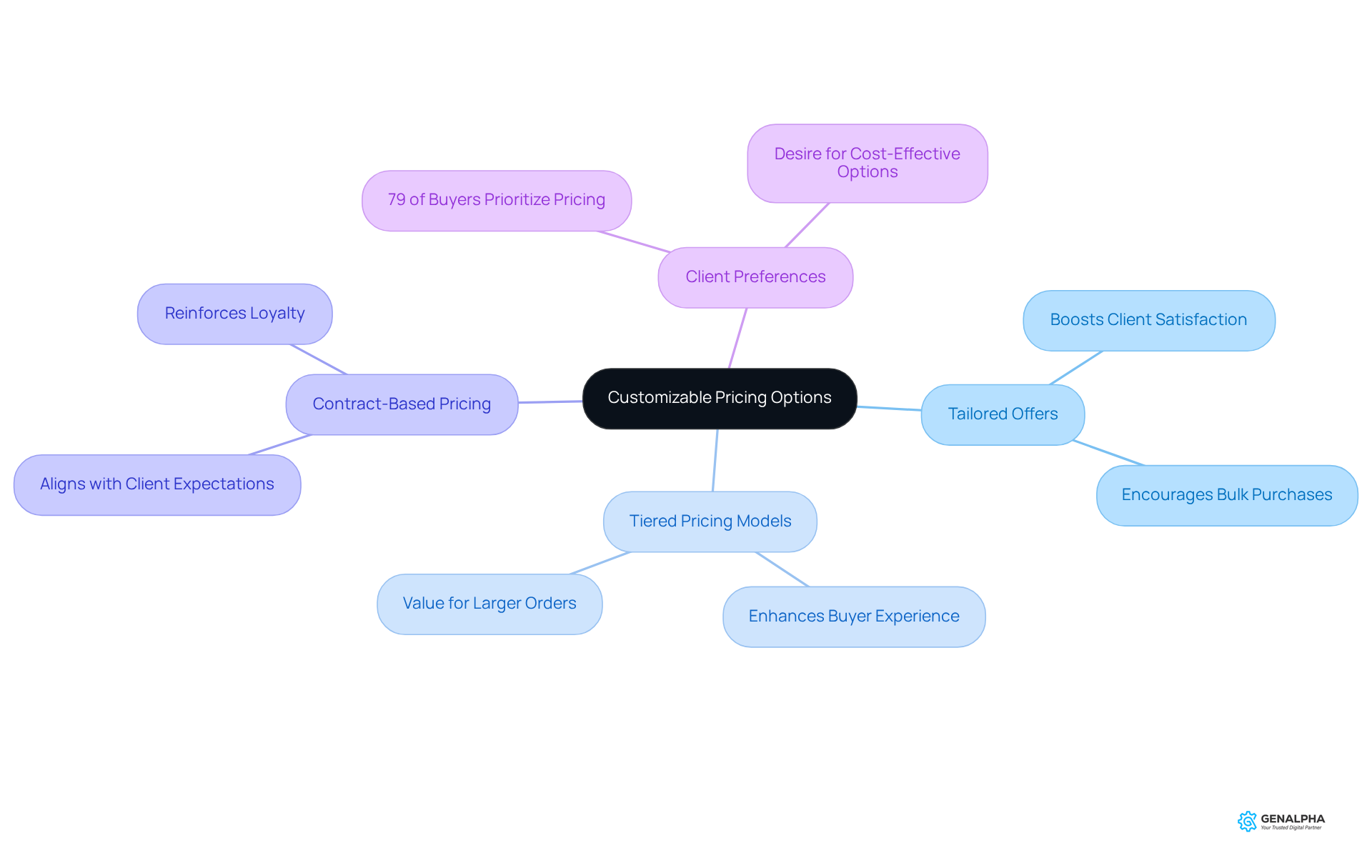
Advanced Inventory Management: Streamline Stock Control
Have you ever faced the frustration of running out of stock just when a customer needs it? With sophisticated like those in Equip360, you can say goodbye to those worries! These systems let companies keep an eye on stock levels in real-time, predict demand accurately, and make reordering a breeze.
This approach not only cuts down on the chances of stockouts but also helps avoid the headache of excess inventory. Who wouldn’t want to save on costs? By tapping into data analytics, businesses can make smart decisions about their inventory levels. This means you can meet customer demand without stretching your resources too thin.
So, why not take a closer look at how Equip360 can transform your inventory management? You’ll find that it’s all about making informed choices that benefit both your business and your customers.
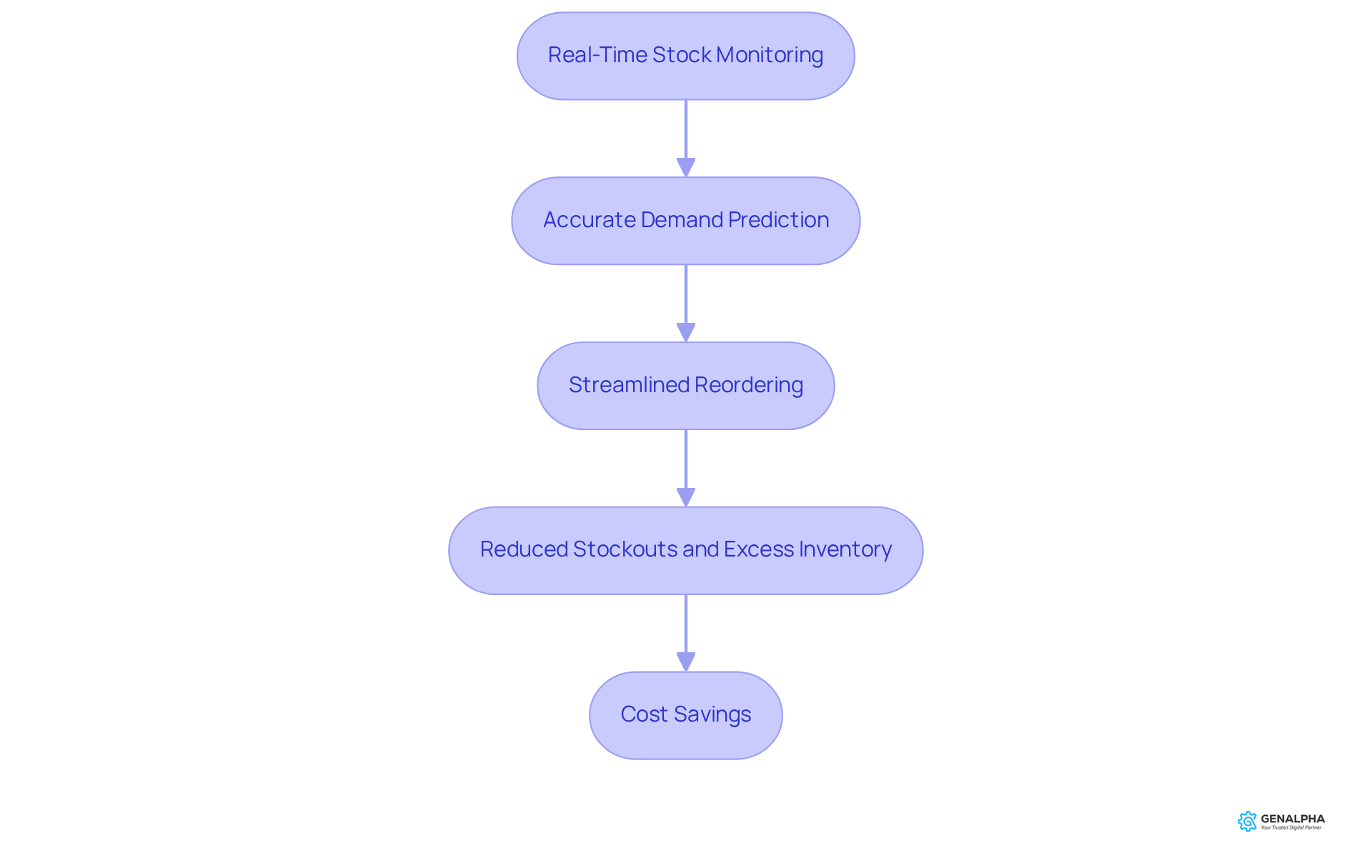
Secure Payment Gateways: Protect Customer Transactions
Implementing secure payment gateways is absolutely essential when it comes to running a wholesaling website. Think about it: these gateways use advanced encryption and tokenization methods to keep your sensitive client information safe during transactions. Plus, by offering a variety of payment options—like credit cards, digital wallets, and bank transfers—you can cater to different consumer preferences while ensuring that every transaction is secure and meets industry standards.
Did you know that 19% of consumers abandon their shopping carts because they worry about transaction security? This statistic really underscores the importance of having in place. And let’s not forget about PCI DSS regulations; sticking to these guidelines is vital to avoid legal troubles and protect against data breaches, which can cost small businesses anywhere from $120,000 to $250,000.
As Daniel Woog, Marketing Director, puts it, 'Security is absolutely paramount when it comes to handling card data and payment transactions on a wholesaling website.' Staying updated on the latest trends in payment security isn’t just about compliance; it’s also key to maintaining a competitive edge and boosting client satisfaction. So, are you ready to take your payment security to the next level?
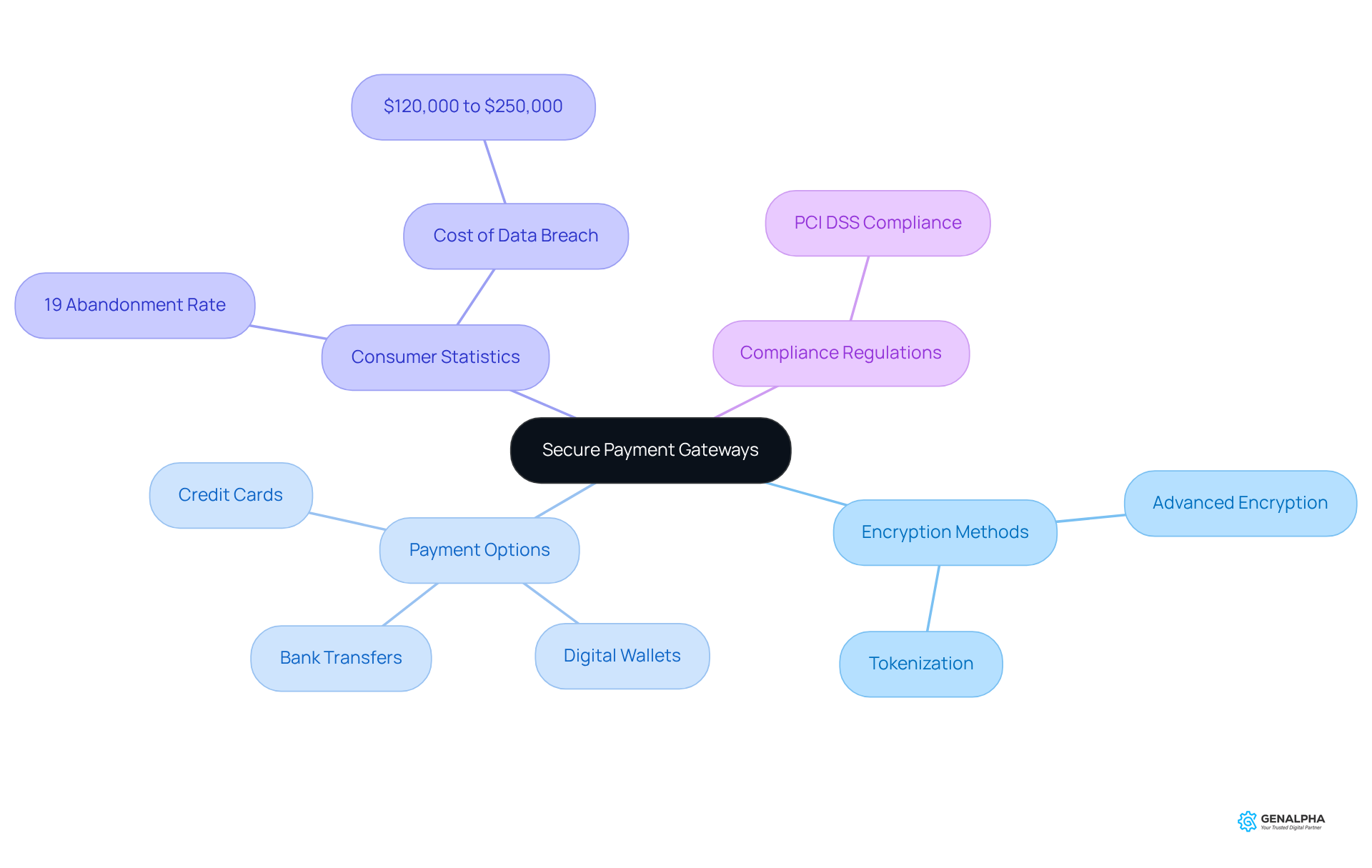
User-Based Roles and Permissions: Enhance Website Security
When it comes to eCommerce platforms, especially for manufacturers, user-based roles and permissions play a crucial role in controlling access. Think about it: by defining roles like administrator, sales representative, and client service agent, companies can keep sensitive information secure and only available to those who really need it. This not only strengthens security but also boosts operational efficiency. Team members can focus on their specific tasks without getting sidetracked by unrelated data, which ultimately leads to better workflow and productivity.
Now, here’s something to consider: recent trends show that implementing strong access controls, especially Role-Based Access Control (RBAC), can greatly reduce the risk of data breaches and unauthorized access. With a staggering 62% of cyberattacks aimed at small online businesses, is essential for protecting sensitive information and staying compliant with regulations like PCI DSS and GDPR.
Moreover, effective access management can streamline processes, making decision-making quicker and more responsive to client needs. By using advanced Identity and Access Management (IAM) solutions, like Customer Identity and Access Management (CIAM), manufacturers can not only enhance their website security but also ensure that employees have the right access to do their jobs efficiently. This dual focus on security and operational effectiveness is vital for thriving in today's competitive digital landscape. So, how are you managing access in your organization?

Automated Backend Workflows: Boost Operational Efficiency
Have you ever thought about how much time we spend on repetitive tasks? Automated backend workflows can really change the game! They simplify processes like:
- order processing
- inventory updates
- client notifications
By cutting down on manual work, companies can reduce errors and speed things up.
This not only boosts productivity but also allows teams to focus on what really matters—higher-value tasks. Imagine what you could achieve with that extra time! Ultimately, this shift and enhances client satisfaction. So, why not consider integrating these workflows into your operations? It could be a game changer!

Mobile Responsiveness: Ensure Accessibility Across Devices
A mobile-responsive design is essential for any wholesaling website. It ensures that your site works seamlessly across all devices, including smartphones and tablets. Think about it: when users can easily navigate your site, experience faster loading times, and see clear calls to action, they’re more likely to stick around. Did you know that over 75% of eCommerce transactions are expected to come from mobile devices by 2025? This means that businesses focusing on can attract a bigger audience and boost their conversion rates.
In fact, a staggering 88% of online shoppers say they won’t return to a website after a poor mobile experience. And it gets even more interesting—62% of consumers won’t revisit a site that doesn’t deliver a smooth mobile interface. As mobile shopping continues to evolve, features like voice search for hands-free shopping and augmented reality can take user engagement to the next level. So, mobile responsiveness isn’t just an option; it’s a vital part of a successful B2B sales strategy for a wholesaling website. This is especially true in the manufacturing sector, where a well-optimized mobile experience can directly impact sales performance. Are you ready to make your website mobile-friendly?
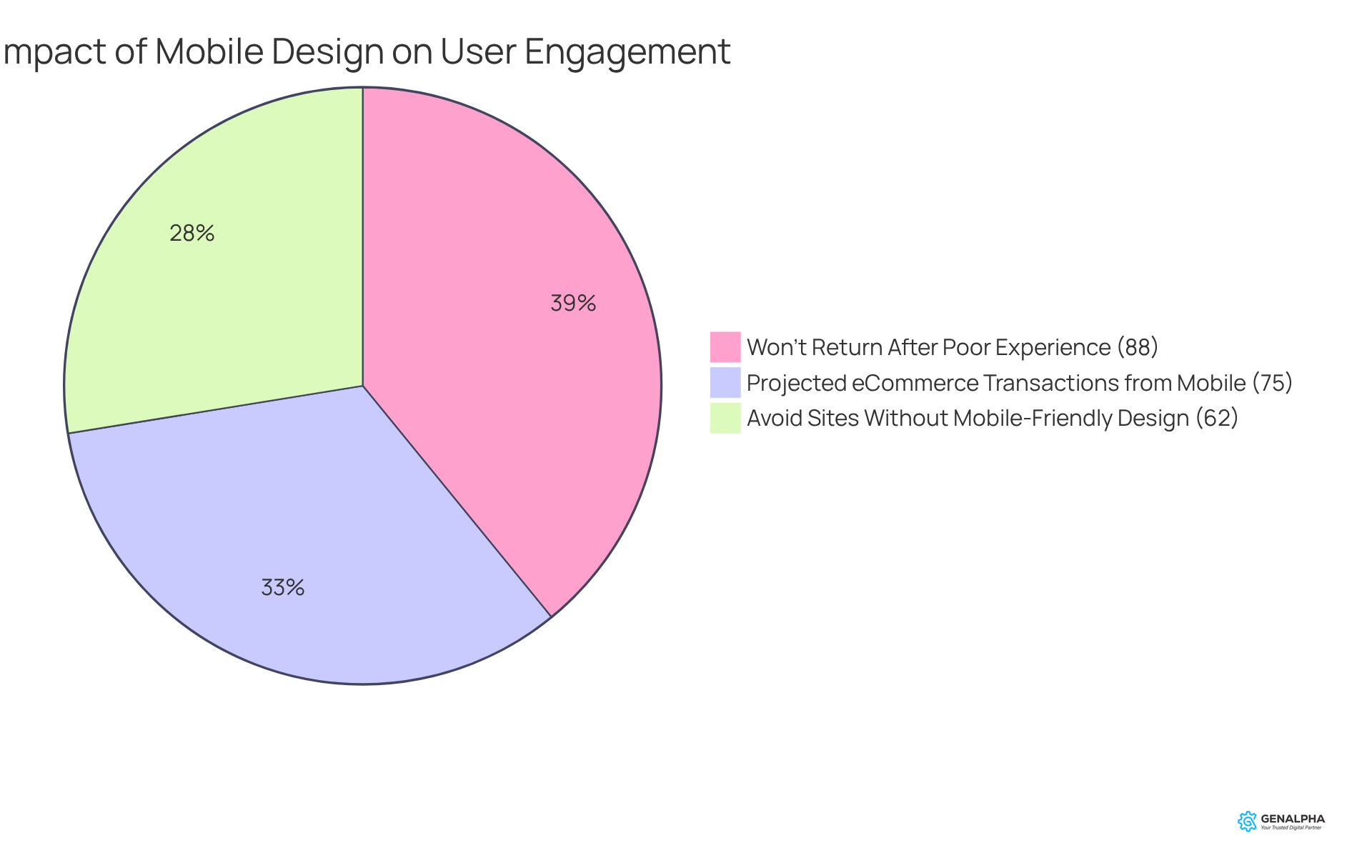
Detailed Product Information: Aid Customer Decision-Making
Have you ever found yourself frustrated by a product description that just didn’t cut it? Comprehensive item information—think specifications, high-quality images, and customer reviews—is crucial for helping you make informed decisions. When businesses provide clear and detailed info, they’re not just sharing facts; they’re highlighting the value of what they offer, which can really help .
Did you know that over 60% of e-commerce shoppers say inaccurate product details are the main reason they return items? That’s a big deal! This emphasizes how important it is to get product descriptions right. Additionally, incorporating comparison tools and FAQs can really enhance your shopping experience, making it easier to weigh your options.
In the equipment sector, where trust is everything, client reviews act as powerful social proof. A report shows that 79% of consumers trust online reviews just as much as personal recommendations. So, it’s essential for businesses to encourage feedback and respond to it—brands that do this often see a boost in customer loyalty.
As trends evolve, adding rich content like 3D/AR previews and sustainability badges can further engage customers and drive sales growth, aligning with what today’s consumers are looking for. Plus, high-quality visuals not only grab attention but also promote purchases, reinforcing the need for thorough item information.
Ultimately, well-crafted item descriptions do more than just inform; they inspire confidence and bridge the gap created by not being able to physically interact with products. So, next time you’re shopping online, look for those detailed descriptions—they can make all the difference!
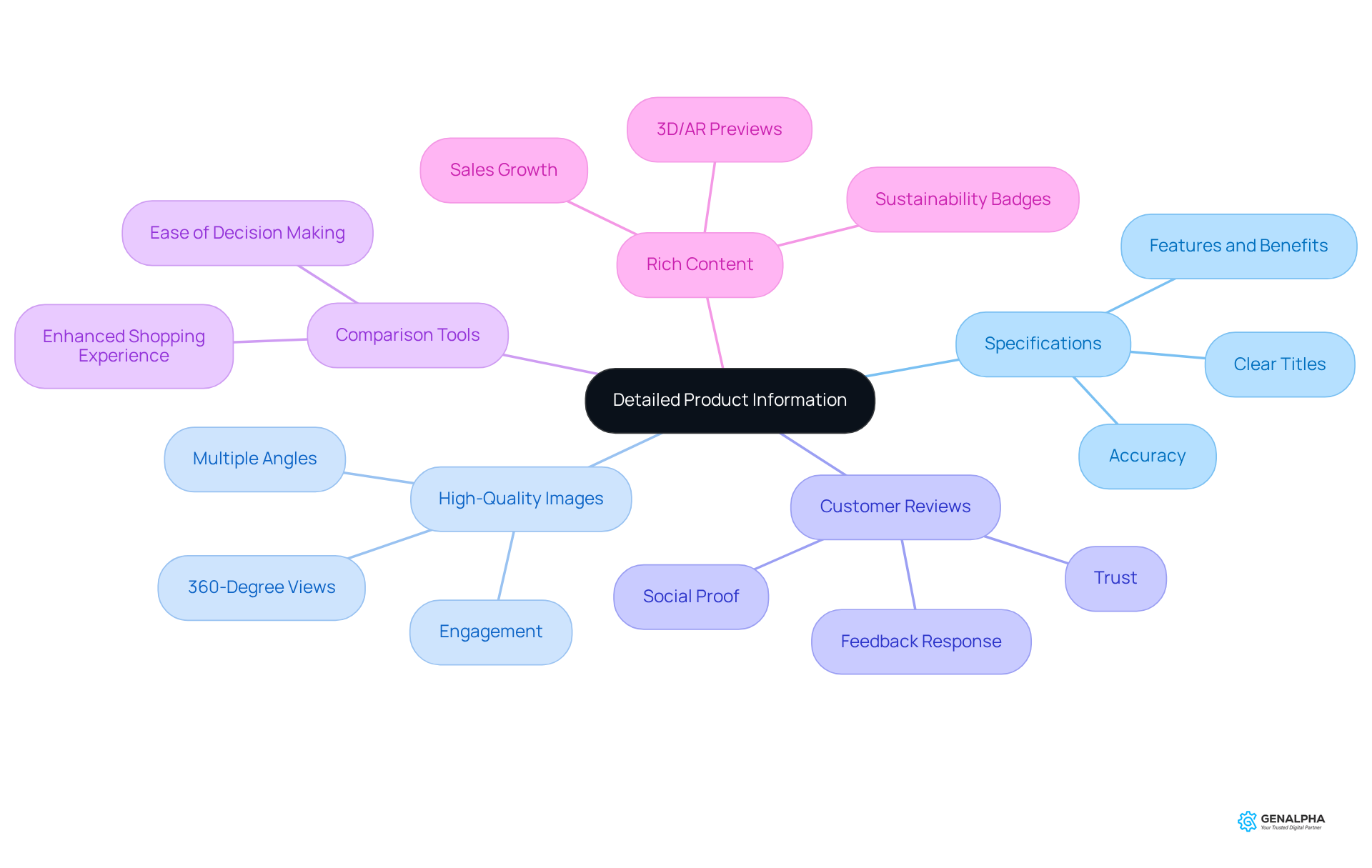
Integrated Marketing Tools: Enhance Product Visibility
Have you ever thought about how integrated marketing tools within eCommerce platforms can really transform your business? They’re designed to help you and boost product visibility. Imagine features like email marketing, social media integration, and SEO optimization working together to attract a wider audience. For example, effective email marketing can significantly enhance engagement and conversion rates. Studies show that personalized email campaigns can increase transaction rates by up to six times compared to those that aren't personalized.
By leveraging these tools, companies can craft targeted marketing strategies that resonate with their audience, driving traffic and ultimately increasing revenue. As manufacturers and distributors navigate the ever-changing digital landscape, embracing integrated marketing solutions—like AI-driven personalization and social commerce—will be essential for achieving sustained growth and visibility in a competitive marketplace. So, how can you get started? A great first step would be to develop a comprehensive email marketing strategy that uses client data to create personalized content.
What do you think? Are you ready to take your marketing efforts to the next level?

Analytics Tools: Unlock Data-Driven Insights for Growth
Have you ever wondered how some companies seem to have a sixth sense about what their customers want? That’s where analytics tools come into play! These handy tools offer businesses into client behavior, sales trends, and operational performance. By diving into this data, companies can pinpoint areas that need a little TLC, tweak their marketing strategies, and boost customer engagement.
Imagine being able to make decisions backed by solid data rather than just a hunch! Implementing robust analytics solutions empowers businesses to do just that. It helps them make informed choices that not only drive growth but also enhance overall efficiency. In today’s digital marketplace, staying competitive is key, and analytics can be your secret weapon. So, why not explore how these tools can transform your business approach?
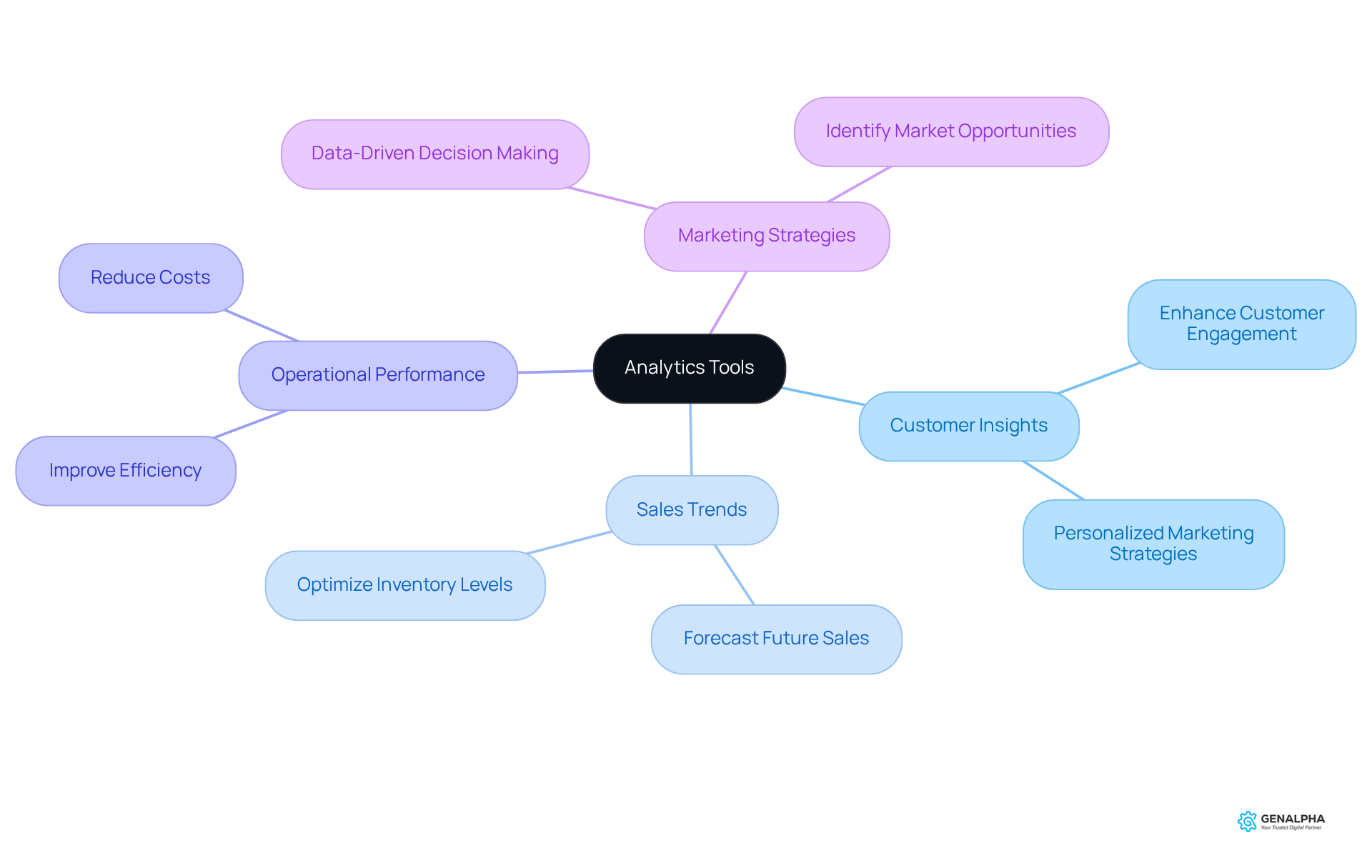
Conclusion
In the competitive world of B2B eCommerce, having a wholesaling website with the right features is essential for success. Think about it: customizable pricing options, advanced inventory management, secure payment gateways, and integrated marketing tools. These functionalities not only enhance user experience but also streamline operations and drive growth. Each of these elements plays a significant role in meeting the diverse needs of clients while ensuring operational efficiency.
So, what are the ten essential features that can turn your wholesaling website into a powerful sales tool?
- Customizable pricing options let you cater to different client segments.
- Advanced inventory management helps you avoid stockouts and excess inventory.
- Secure payment gateways keep customer transactions safe.
- User-based roles enhance website security.
- Automated backend workflows.
- Mobile responsiveness.
- Detailed product information.
- Integrated marketing tools.
- Analytics capabilities empower you to make data-driven decisions.
- Boost customer engagement.
Ultimately, embracing these features isn’t just about keeping up with trends; it’s about positioning your wholesaling business for long-term success. As the landscape evolves, investing in these functionalities will not only meet current demands but also prepare you for future challenges. So, why wait? Now is the perfect time to evaluate and enhance your wholesaling website, ensuring it’s equipped to thrive in a digital-first marketplace.
Frequently Asked Questions
What is Equip360?
Equip360 is a comprehensive B2B eCommerce platform designed for manufacturers and distributors, featuring an intuitive user interface and robust inventory management capabilities.
How does Equip360 improve the customer experience?
Equip360 enhances the customer experience by providing an easy-to-navigate platform and allowing companies to manage their product catalogs efficiently.
Can Equip360 integrate with existing systems?
Yes, Equip360 seamlessly integrates with existing ERP systems, facilitating a smooth transition to digital operations.
What analytics features does Equip360 offer?
Equip360 provides real-time analytics and customizable storefronts, enabling businesses to adapt to market demands and improve sales performance.
How do customizable pricing options benefit businesses?
Customizable pricing options allow businesses to create tailored offers for specific client segments, enhancing client satisfaction, encouraging bulk purchases, and fostering repeat business.
What are tiered pricing models?
Tiered pricing models offer different price points based on order volumes, providing greater value for larger purchases and improving buyer experiences.
Why is clear pricing information important for B2B buyers?
Clear pricing information is crucial as 79% of B2B buyers prioritize pricing when making purchasing decisions, making effective pricing strategies essential.
How does Equip360 assist with inventory management?
Equip360 features advanced inventory management systems that allow companies to monitor stock levels in real-time, predict demand, and streamline reordering processes.
What are the benefits of using data analytics in inventory management?
Data analytics helps businesses make informed decisions about inventory levels, reducing the risk of stockouts and excess inventory, ultimately saving costs.




